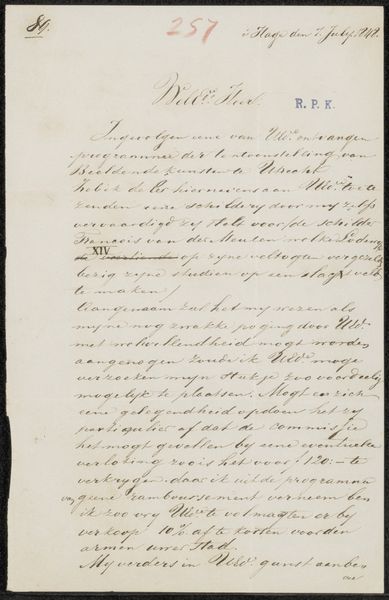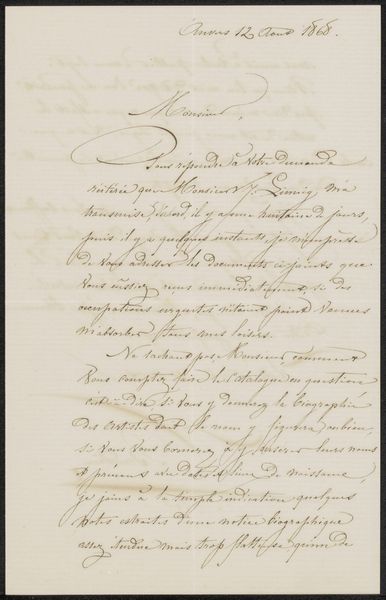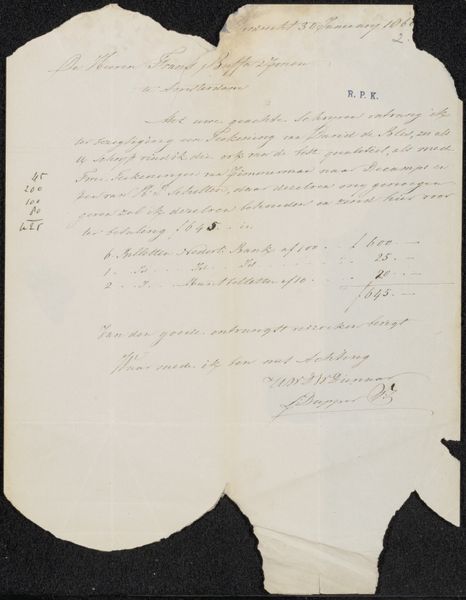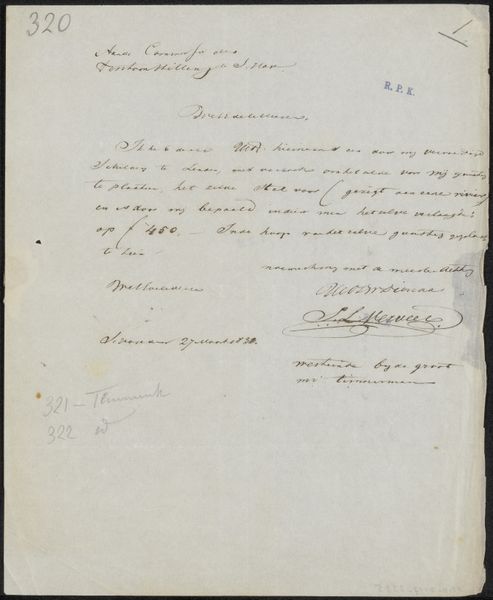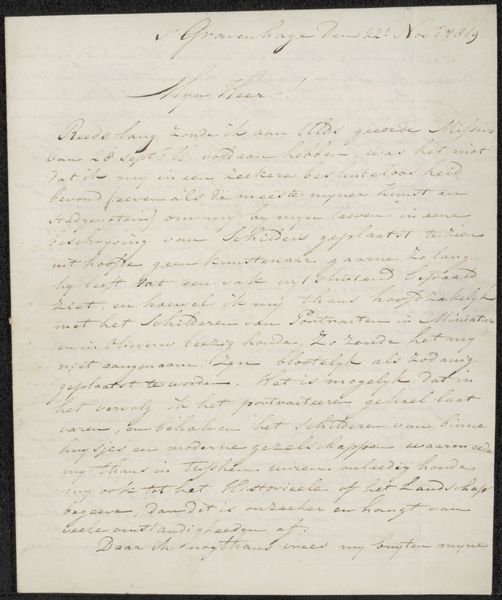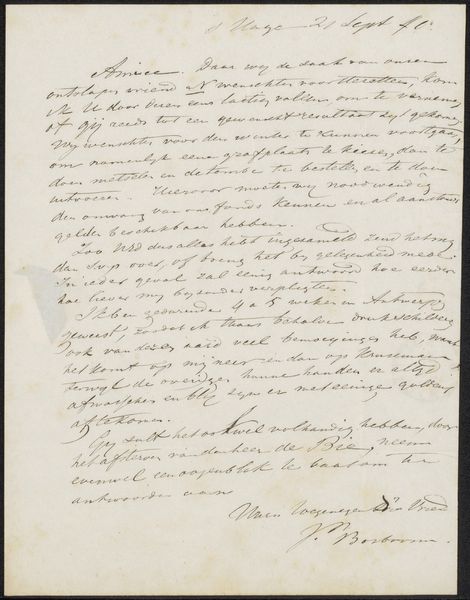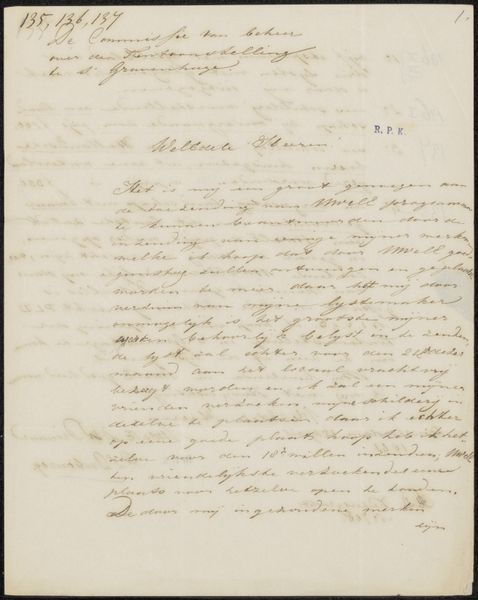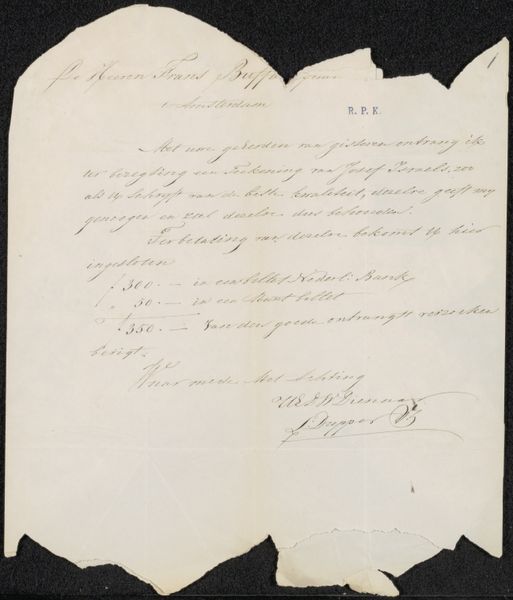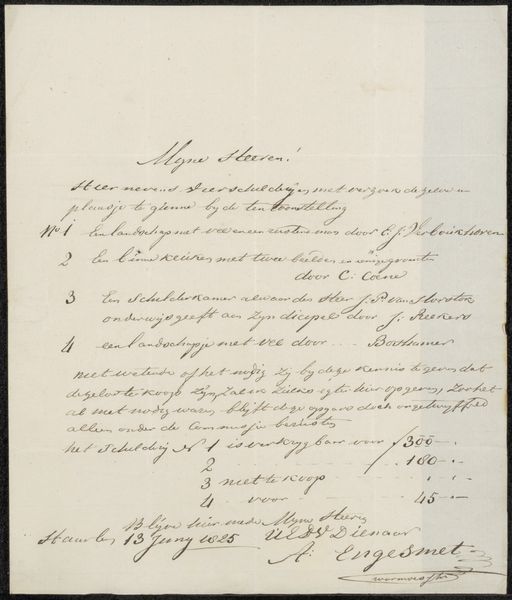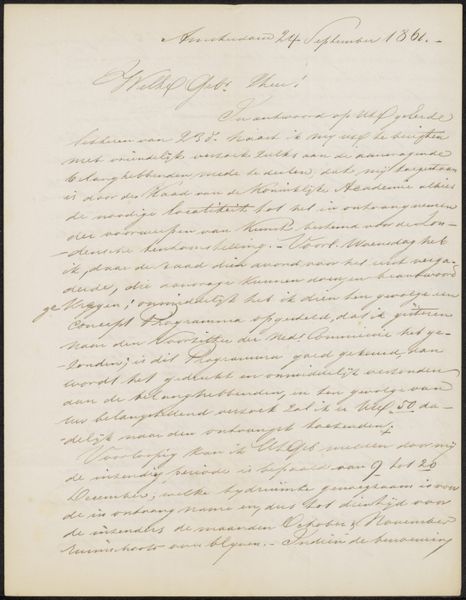
Brief aan jonkheer H.P.F. Hooft, secretaris van de commissie van de Tentoonstelling van Levende Meesters in Den Haag Possibly 1843
0:00
0:00
drawing, paper, ink, pen
#
drawing
#
paper
#
ink
#
pen
#
history-painting
Copyright: Rijks Museum: Open Domain
Editor: This document, "Brief aan jonkheer H.P.F. Hooft, secretaris van de commissie van de Tentoonstelling van Levende Meesters in Den Haag", is possibly from 1843 and crafted by Ernest Slingeneyer. It seems to be ink on paper. Initially, I’m struck by how the script itself creates a visual texture, almost an abstract design, on the page. What catches your eye as you analyze the formal elements? Curator: Indeed. Let us focus on the materiality. The pen strokes are remarkably consistent, exhibiting the artist's control. Note how the density of the ink varies, creating areas of light and shadow which, while unintended, enhance the texture of the page. How do you perceive the overall structure created by these formal characteristics? Editor: The flow of the script organizes the space, directing the eye downward and slightly right, like a carefully planned composition. But is that deliberate or just the natural inclination of handwriting? Curator: An astute observation. Even without representational content, we can still interpret the arrangement. Consider the blank spaces surrounding the text, particularly the torn area. This negative space provides a stark contrast, drawing attention to the dense, ordered lines of script. Can we extrapolate meaning simply from how these elements interact? Editor: Perhaps the fragility of the document itself—the aging paper, the faded ink, and that tear—speaks to the passage of time and the impermanence of art itself. It is almost like a ruin. Curator: Precisely. The imperfection becomes a crucial element. We can then analyze it like any other drawing, considering line, tone, texture and composition independent of the text's literal meaning. What have you gained from observing Slingeneyer’s document today? Editor: I hadn't considered how much a seemingly functional item like a letter could be appreciated for its pure formal qualities. It really highlights the importance of seeing beyond the surface. Curator: Yes, by applying structuralist principles, even the mundane can yield surprisingly rich aesthetic rewards.
Comments
No comments
Be the first to comment and join the conversation on the ultimate creative platform.
